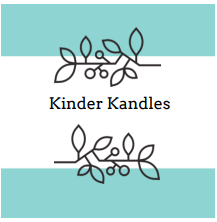
Kinder Kandles POV: Paraffin vs Soy
Share
Let's chat about it... I've had a lot of people ask me if my candles are made with Soy and here's my answer. No.
I have made some of my candles with a soy-paraffin blended wax but most of them are a paraffin blend. Why?
My number 1 reason that I use paraffin; is cost. When I say cost—I don't mean for me, I mean for you. YOU the consumer. There are candle companies out there (big business ones and little business ones) that charge well over $25 for an 11oz (or smaller) candle--and I get it, the cost of soy wax is expensive. I don't know all the logistics that it takes in order to harvest the wax off of soy beans and if that's the reason it's so expensive--or if it's a demand vs supply and an economical play off a popularity/social point of view, but if you are interested in reading the flip side of the "I don't use soy & here's why" coin-- check out some of these good websites/blogs.
Or look into for yourself & decide.
https://www.alohabay.com/people/What-Chemicals-Are-in-Your-Soy-Candles.html
http://www.candle-licious.com/soy-vs-paraffin-wax-candles.html
https://candles.org/elements-of-a-candle/wax/
Also...I hear a lot "Oh, well do your candles burn clean" ... well yes, they burn as clean as any candle can burn. If you want to take a deeper dive--you can keep reading the FAQ's cited below, which are located on the National Candle Association's web page.
Source: NCAs frequently asked questions web page.
Q. Are certain candle waxes better than others?
No. All types of candle waxes perform well, and will burn cleanly and safely when they are of high quality. U.S. candle manufacturers select waxes or blends of waxes based on their suitability for specific types of candles or formulation profiles, as well as their own candle-making preferences.
Q. Is paraffin wax toxic?
No. Paraffin wax is non-toxic. In fact, paraffin is approved by the U.S. Food and Drug Administration for use in food, cosmetics, and medical applications. Food-grade paraffin is commonly used for manufacturing candles.
Q. What causes a candle to smoke, and what can I do to correct it?
A well-made candle will create virtually no smoke when burning properly. However, if the wick becomes too long, or an air current disturbs the flame's teardrop shape, small amounts of unburned carbon particles (soot) will escape from the flame as a visible wisp of smoke. Any candle will soot if the flame is disturbed. To avoid this, always trim the wick to ¼ inch before every use and be sure to place candles away from drafts, vents or air currents. If a candle continually flickers or smokes, it is not burning properly and should be extinguished. Allow the candle to cool, trim the wick, make sure the area is draft free, then re-light.
Q. Is candle soot harmful?
No. The minuscule amount of soot produced by a candle is the natural byproduct of incomplete combustion. Candle soot is composed primarily of elemental carbon particles, and is similar to the soot given off by kitchen toasters and cooking oils. These everyday household sources of soot are not considered a health concern, and are chemically different from the soot formed by the burning of diesel fuel, coal, gasoline, etc.
Q. Are candles made with "natural" ingredients or essential oils safer?
A natural ingredient, as opposed to a manufactured or synthesized ingredient, is not necessarily any safer. In fact, scores of natural ingredients are known to be extremely toxic to humans in very small amounts. NCA members are committed to manufacturing candles that use ingredients known to be safe and approved for use in candles, whether "natural" or synthesized.
Q. Is my candle biodegradable?
Probably. Studies have shown that beeswax, paraffin and vegetable-based waxes are biodegradable. The vast majority of candles today are made primarily from these waxes.
Q. Are vegetable-based waxes water soluble?
No. By definition, a wax is not soluble in water.
Candle Myths
- Paraffin wax is toxic. False
- Soy wax is water soluble. False.
- Soy wax is biodegradable while Paraffin wax is not. False.
- Candles made with “natural” ingredients are safer. False.
- Soy candles do not soot and paraffin candles cause soot. False.
- Soot from candles is harmful. False.
Source: The National Candle Association, the governing body of candle manufacturers in the United States.
